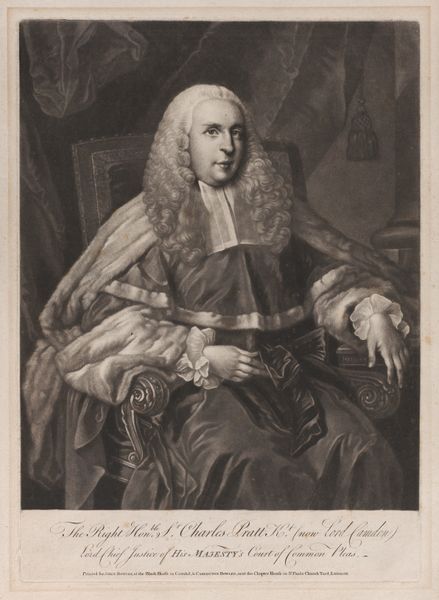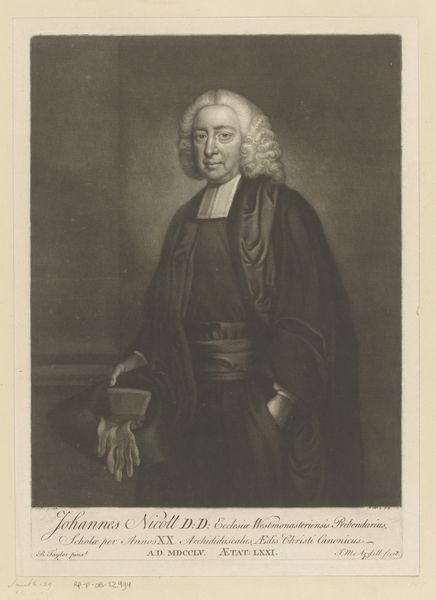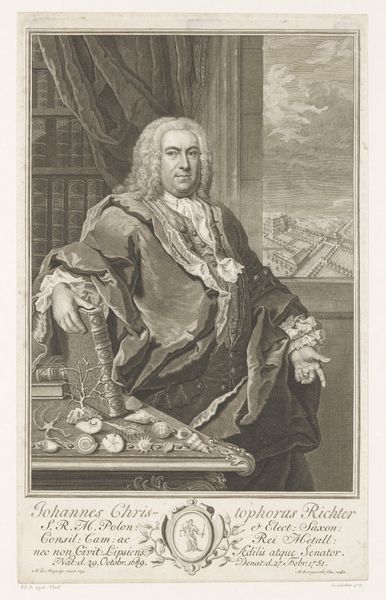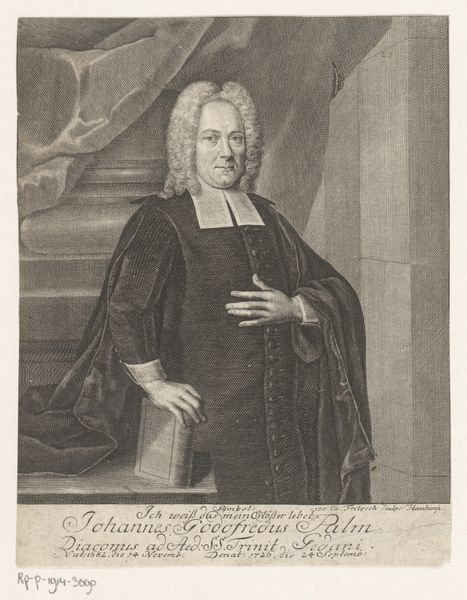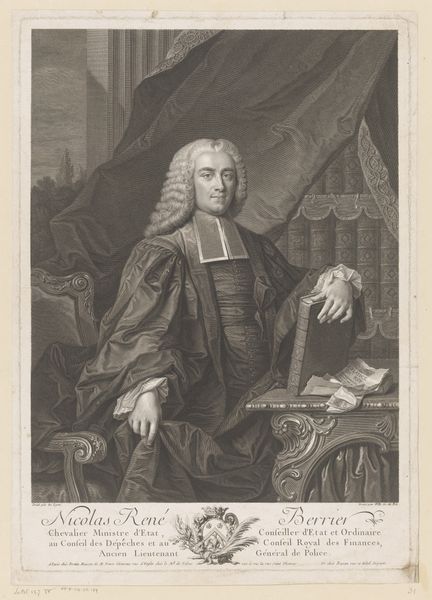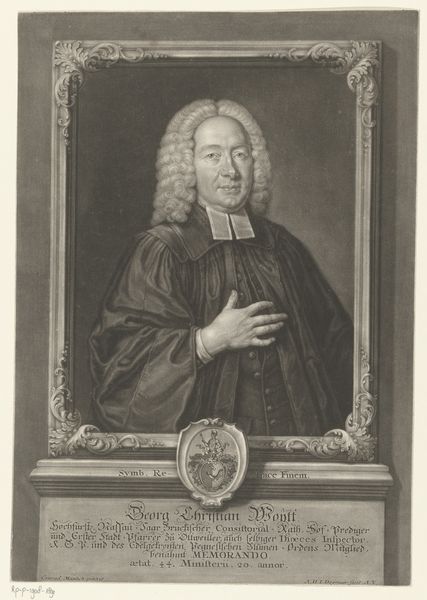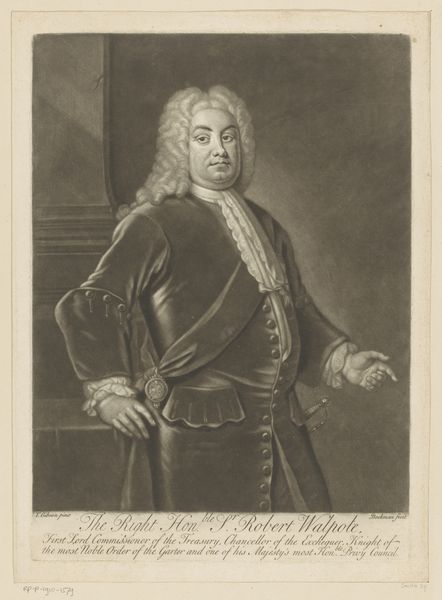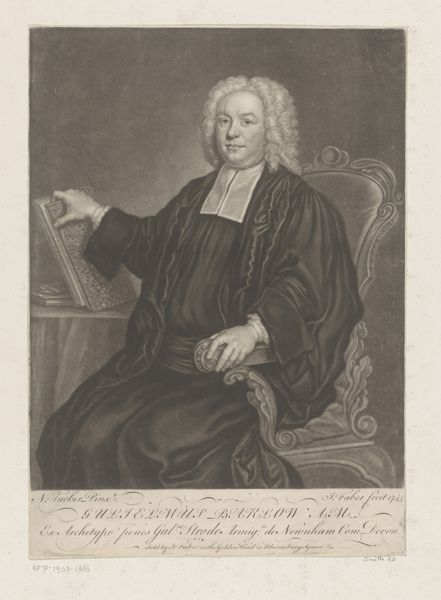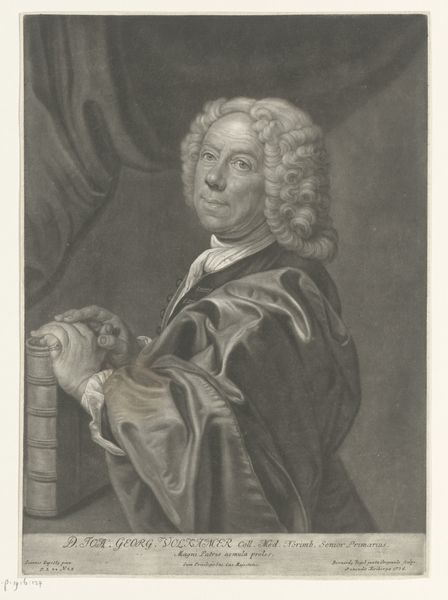
engraving
#
portrait
#
baroque
#
charcoal drawing
#
charcoal art
#
historical photography
#
line
#
engraving
Dimensions: height 452 mm, width 317 mm
Copyright: Rijks Museum: Open Domain
This is James McArdell’s portrait of Thomas Herring, Archbishop of Canterbury, made using the printmaking technique of mezzotint. Mezzotint is a painstaking process. The entire copper plate is roughened with a tool called a rocker, creating countless tiny burrs. If printed at this stage, it would produce a solid black field. The printmaker then works back into this darkness, using scrapers and burnishers to selectively smooth areas of the plate. This allows for varying tones of grey, and highlights that appear almost photographic in their intensity. Looking closely, you can see how McArdell has used this tonal range to great effect, rendering the textures of Herring’s garments, hair and skin. Each of these modulations required hours of skilled labor. In the 18th century, mezzotint was primarily used for reproducing paintings, making art more accessible to a wider audience, and building the reputations, and income, of both painter and printmaker. So, next time you look at a print, remember the immense amount of craft and labor that went into its creation. It’s a reminder that what we often call ‘fine art’ is deeply connected to the world of skilled making.
Comments
No comments
Be the first to comment and join the conversation on the ultimate creative platform.
